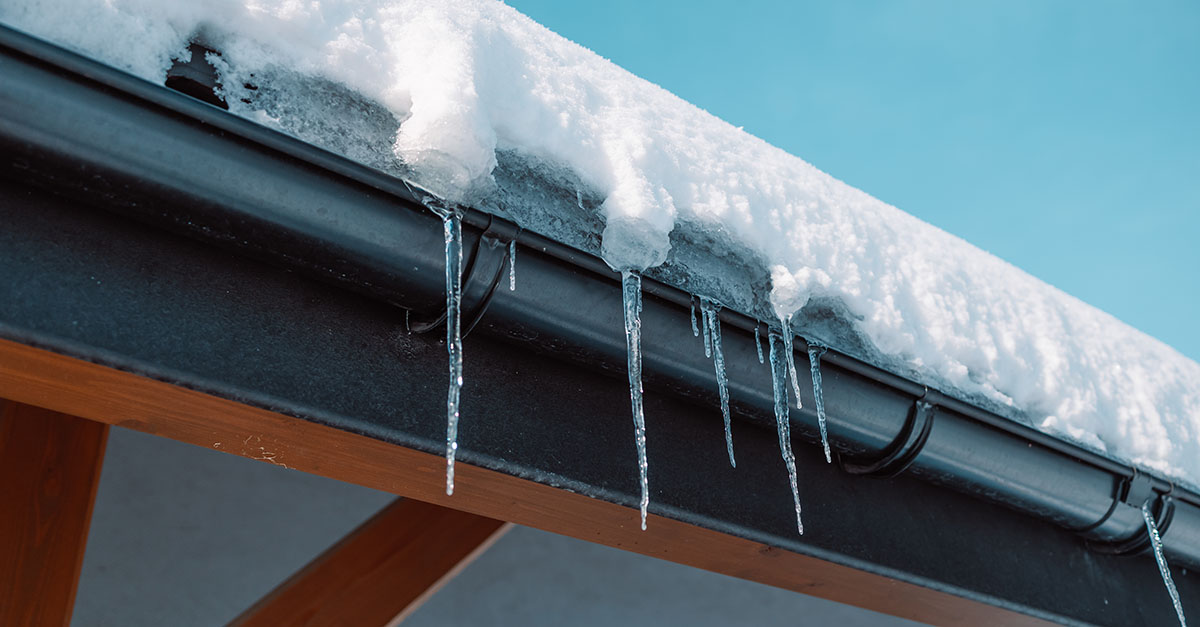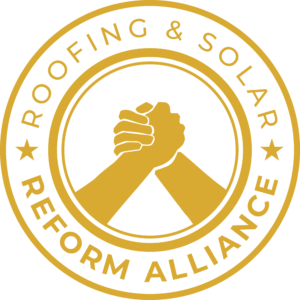Ice Dams: What Are They and How to Prevent Them
You may be acquainted with ice, but have you heard of ice dams? While the name may not sound particularly menacing, the formation of ice dams can lead to substantial roof damage. As your home’s primary defense against the elements, your roof requires vigilant care, particularly during the winter months. The stealthy nature of ice dams is their biggest challenge! Concealed beneath a thick snow blanket, they can easily go unnoticed, causing damage right under your nose. To avoid experiencing this issue, it is essential to have a solid understanding of ice dams. Fortunately, we will provide a comprehensive overview, starting with what ice dams are, how they form, effective removal methods, and proactive prevention techniques.
What Is an Ice Dam?
An ice dam is an icy obstruction that develops along the roof’s edge. These dams act as barriers, preventing the smooth flow of melting snow and ice through your gutters and downspouts. The presence of large icicles hanging from the corners of your house or gutters is a clear indication that ice dams may be forming on your roof. As more snow melts, the dam will progressively enlarge, working its way down the roof.
Over time, as the dam grows larger, instead of the water freezing and integrating with the dam, it will be trapped behind it. This water, now dammed, will seep into your home through cracks in the roof. It’s crucial to address these issues before they escalate into massive ice walls that can cause damage to your gutters, shingles, and more.
How Do Ice Dams Form?
Ice dams occur due to temperature fluctuations on your roof. As snow melts at the top, it trickles down and refreezes near the bottom, forming a dam. This happens when indoor heating rises through the ceiling and warms the roof’s surface. The higher part of the roof melts the snow, which then flows down until it reaches a section below the freezing point. The water then solidifies, creating an ice dam.
Under certain circumstances, an ice dam can form under the following circumstances:
- Your roof is covered in snow.
- The average temperature outside is consistently below freezing, measuring below 32 degrees.
- The temperature of the roof surface exceeds 32 degrees at its upper end and falls below 32 degrees towards the lower end.
The temperature variations occur because of inadequate insulation. Therefore, it is crucial to ensure that your home has proper insulation to prevent the formation of ice dams or their recurrence after removal.
Are Ice Dams Dangerous?
In addition to the potential damage they can cause to your home, ice dams pose significant dangers when they hang from the overhangs and gutters. There have been several tragic cases where people have lost their lives due to falling icicles, and ice dams are even larger and heavier in comparison. It is crucial to be aware of these risks and take appropriate measures to prevent them.
The weight of the ice dam on your gutter poses a risk of it falling and potentially injuring you or your loved ones while walking along the sidewalk or driveway. They are incredibly heavy and have the potential to cause broken bones or even worse. Therefore, it is crucial to remove them to prevent both property damage and serious harm to yourself.
What Other Problems Can Ice Dams Cause?
Failing to take proper precautions to prevent or remove ice dams can lead to a multitude of issues for your home. The weight of the dams, combined with the moisture from melting snow and ice, creates highly detrimental conditions that can cause significant damage. It is crucial to address these concerns to protect your home from potential harm.
- The weight of an ice dam has the potential to cause significant damage to your home, tearing down gutters, shingles, and downspouts. Not only does this result in costly repairs, but it also makes the restoration process more challenging.
- When ice and snow accumulate behind the dam, it can result in water seeping into your attic. This occurs because the water is unable to drain off the roof due to the blockage in your gutter.
- Snow buildup can potentially seep into vulnerable areas of your roof, such as chimneys, skylights, and other sensitive spots.
- Water leakage into the attic and walls of your home can result in the growth of mold and mildew. This can lead to respiratory problems and cause extensive damage to the interior of your home. It is crucial to address this issue promptly to protect both your health and the integrity of your living space.
- Excessive snowfall and ice accumulation have the potential to cause roofs to collapse.
How to Get Rid of an Ice Dam
Removing ice dams can be a tricky task and is best left to the professionals. Here are some methods that they may use:
- Roof Snow Removal: One of the most effective ways to get rid of ice dams is by removing snow from your roof. This will prevent large amounts of snow from melting and refreezing, creating an ice dam. It is recommended to hire a professional to remove the snow using a roof rake or other specialized equipment.
- High-pressure Steamers: Professionals also use high-pressure steamers to melt and break away ice dams. This method is effective, but it requires specialized equipment and trained professionals.
- Chemical De-Icers: These are chemicals that can be used to melt the ice dam. However, de-icers typically contain harmful substances that can damage your roof or gutters if not used correctly. It is essential to seek professional help before the application of these chemicals.
Preventing Ice Dams
The best way to deal with ice dams is by preventing them from forming in the first place. Here are some preventive measures you can take:
- Ensure that your attic is adequately insulated to prevent heat from escaping and melting snow on your roof. This will also help regulate the temperature on your roof, reducing the likelihood of ice dams forming.
- Make sure your roof is well-ventilated to maintain a consistent temperature throughout the roof surface, preventing temperature fluctuations that lead to ice dam formation.
- Regularly clear snow off your roof using a rake or other safe methods. This will prevent large amounts of snow from accumulating and creating ice dams.
Camel City Roofing: Roofing Replacements and Installations
By taking these preventive measures, you can protect your home from the potential damage and dangers of ice dams. It is crucial to be proactive in maintaining your roof’s insulation and ventilation to prevent these issues from occurring. In case of significant snowfall, it is also highly recommended to have a professional clear snow off your roof to minimize the risk of ice dams forming in the first place. With proper care and maintenance, you can ensure the safety and longevity of your home during the harsh winter months.
At Camel City Roofing, we understand the importance of a well-maintained roof and offer quality roofing installations and replacements. Our team of professionals is equipped with the necessary knowledge and tools to help you prevent ice dams and other potential issues so you can enjoy your roof for many years to come. Contact us today for your year-round roofing needs!





